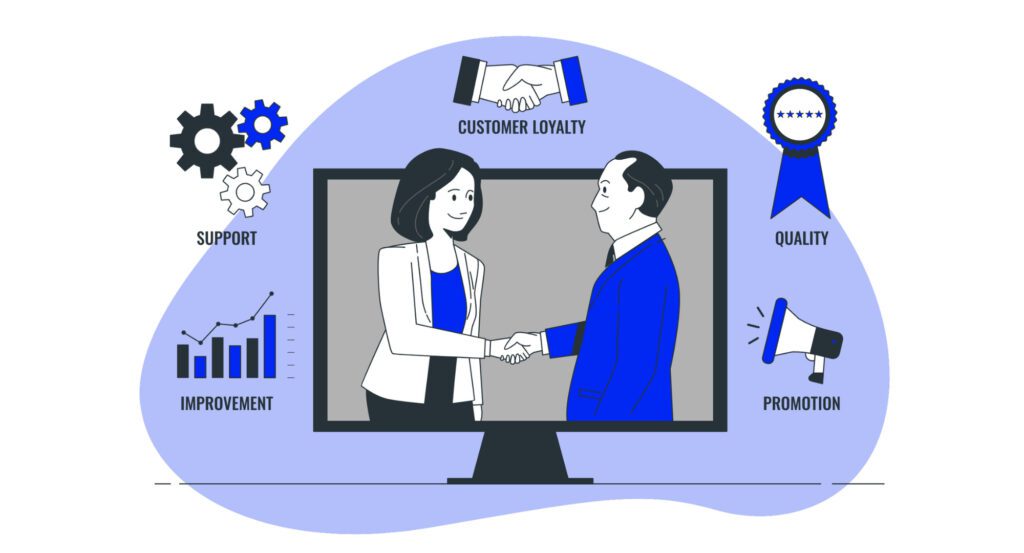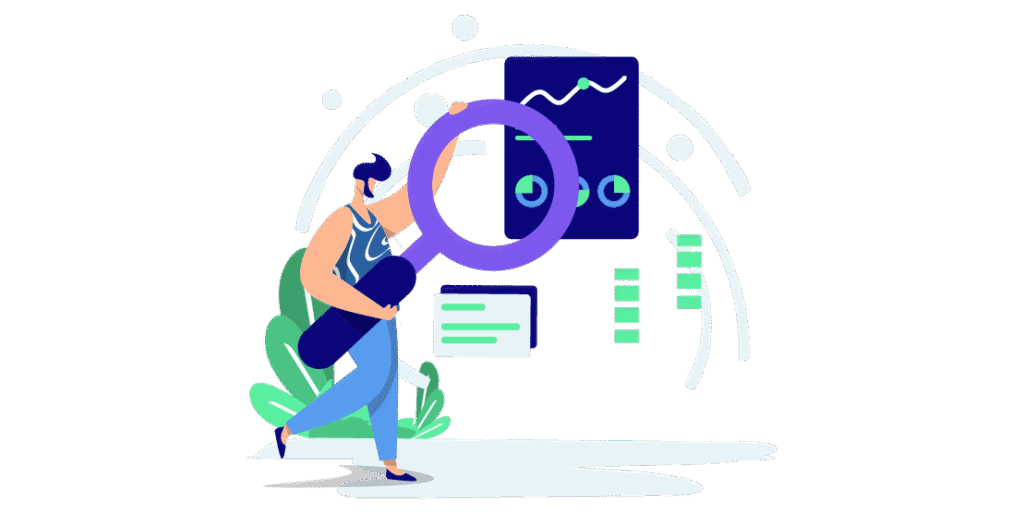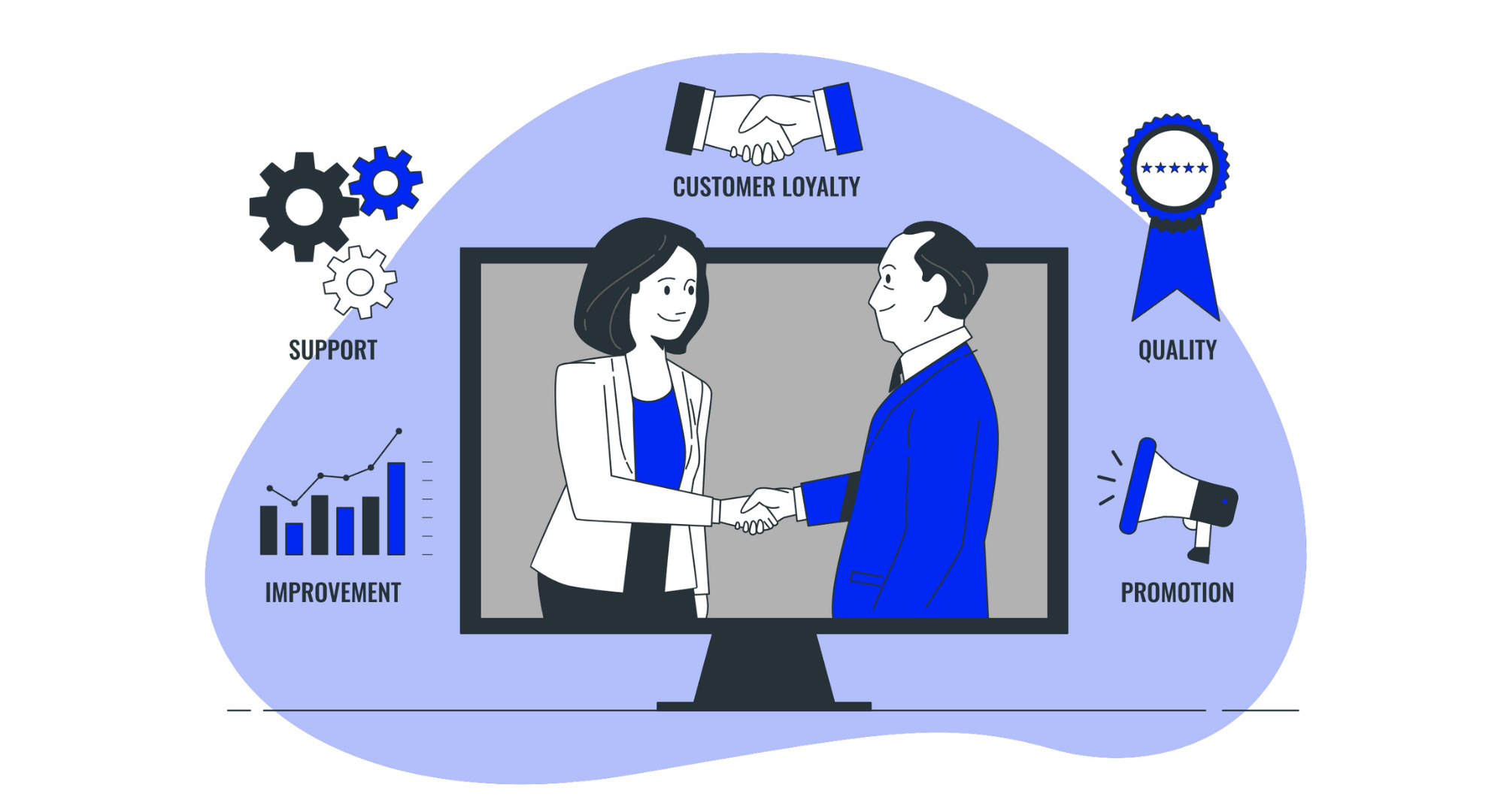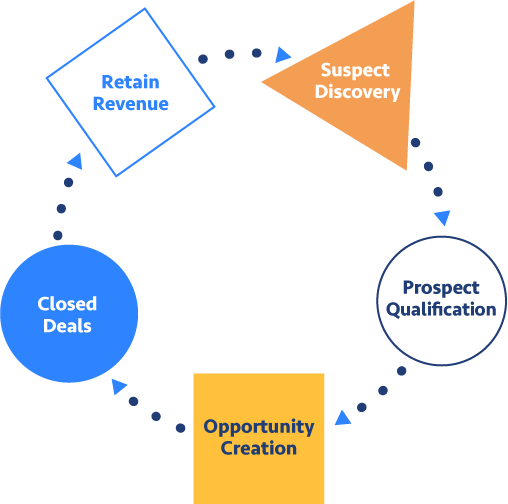A series of tips on maximizing sales efficiency because at some point in your sales role, you’ll need to address this and make selling more efficient. This blog article isn’t about being more productive, but you should focus on sales activity that makes you more productive and more efficient. You’re always looking to become more efficient because you may uncover some tremendous opportunities for improvement when you map your entire sales process out from start to finish. Don’t leave anything out.
However, don’t create things to measure just to have things to measure. We are all in data overload, and the last thing you need to do is to create more useless data. It’s a timewaster for everyone involved. It’s not about being viewed as cutting edge or super intelligent or slicker than everyone else. It’s not about being impressive; it’s about driving your sales efficiency.
Choose the Channels To Communicate.
The first question is to ask yourself, what channels will I use to reach prospects or potential customers? What sales skills or communication skills will you need to acquire?. You need to take a step-by-step approach that guides your decision-making and ensures your efforts are both efficient and targeted. Consider the following sequence:
- Identify where your prospects are most active. Are they engaging on LinkedIn, responding to email, or available for phone calls? This will help you focus your initial outreach.
- Determine the urgency of your message. Why will the prospect listen to or read what you have to say? What insights or compelling information will trigger a response? If warranted, a direct phone call first may break through the noise.
- Consider timing factors like time of day or year. Reaching out during business hours, right after a webinar, or around industry events can improve your chances of making meaningful contact.
- Select the most appropriate channel based on these criteria. Match your outreach method to your needs and objectives for each scenario.
To illustrate, suppose you’re reaching out to a new lead for the first time: a personalized email may be most effective. When nurturing an existing relationship, a quick phone call or a follow-up email after attending the same online seminar can reinforce the connection. For closing a deal, you might opt for an in-person meeting for a personal touch. On the other hand, if you’re announcing a new product to a broad audience, a well-crafted email campaign or even a social media post could be ideal.
As you move between these steps, remember to adjust your approach based on the urgency and timing involved. Selecting multiple channels can increase the chances of a successful contact, but each should be used with intention. By following this systematic decision tree and adapting your outreach with varied, scenario-based examples, you’ll be able to apply these best practices efficiently—no matter your industry or sales context.
Identify Your Target Customers

Before you begin planning your outreach strategy, take concrete steps to fully understand your customer profiles, also known as ideal customer profiles. Here are some effective actions you can take:
- Conduct surveys or questionnaires to gather insights on customer preferences and pain points.
- Analyze existing customer data such as purchase history, engagement statistics, or website analytics.
- Interview current clients to learn about their motivations, challenges, and goals.
- Research industry trends and competitor offerings to understand market expectations.
- Collect feedback from your sales and support teams to identify recurring customer issues.
To begin, you will want to create customer personas to guide your sales efficiency activity. A customer persona is a detailed profile that represents your ideal client, including their demographics, challenges, and goals. For example, a persona might include information about a client’s job role, typical problems they face, preferred communication channels, and buying motivations. Taking the time to build and refer to these personas will help you prioritize channels and tailor the messaging for maximum impact.
What Pain Points Are You Addressing
Once you’ve identified the pain points of your prospects that your product or solution solves, then you need to work to address them directly with tailored solutions. For example, if your prospect struggles with time management, explain how your product automates tasks to save them hours each week. By providing concrete examples that connect your offering to the challenges your customers face, you demonstrate a clear understanding of their needs and the value you bring. Make sure to highlight how your solution addresses these pain points at every stage of your sales pipeline.
Sales Efficiency And Marketing
Effective sales efficiency flourishes when sales and marketing teams join forces. For instance, when creating customer personas, consider organizing a joint workshop where team members from both sides contribute their unique perspectives—marketing might bring demographic insights, while sales shares direct feedback from client conversations. This collaborative approach ensures your personas reflect the full spectrum of your audience’s needs. Aligning the sales push with buyers’ journeys is another area where teamwork proves invaluable. Regular strategy meetings between departments can help both sides stay informed about changing customer expectations, upcoming campaigns, and evolving messaging. By maintaining a transparent dialogue, sales and marketing can synchronize their efforts for greater impact.
To foster effective collaboration, implement clear and actionable best practices such as
- Schedule monthly alignment meetings to review objectives and coordinate strategies
- Share customer feedback regularly across both teams to identify trends and pain points
- Jointly review and approve marketing materials to ensure consistency with sales messaging
- Set shared goals and sales performance metrics to track the success of collaborative initiatives
By embedding these practices into your workflow, you’ll bridge the gap between departments, create a unified approach, and lay the foundation for a more effective and cohesive outreach strategy.
Create and Follow Sales Touchpoints
Every successful sales plan should include a well-defined series of touchpoints—specific interactions designed to nurture prospects and move them through the pipeline. Clearly mapping out these steps helps you stay organized and ensures you’re building meaningful connections.
These touchpoints might include:
- Personalised emails tailored to the prospect’s needs
- Connection requests with a short introductory note
- Follow-up phone calls to answer questions or provide value
- Sharing relevant articles or case studies to showcase your expertise
- Sending short video messages to stand out and build rapport
Using a mix of these methods over several scheduled interactions increases your chances of making contact and ultimately converting the lead. Remember to adjust the content and style of your outreach to fit the typical sales pipeline stages and the preferences of your audience. By combining a variety of creative touchpoints, you’ll be well-positioned to engage prospects consistently and efficiently.
Know Your ROSE To Boost Sales Efficiency.
ROSE stands for Return On Sales Effort. Part of mastering sales outreach is understanding when to redirect your time and energy toward more promising leads. Not every prospect will convert, and it’s crucial to recognize when a prospect is unlikely to move forward. For example, if you notice that a prospect repeatedly ignores your follow-ups or directly says they are not interested, it’s time to shift your focus elsewhere.
To apply ROSE in real sales situations, get in the habit of watching for common signs that a lead won’t convert. These may include unresponsiveness after several attempts, explicit expressions of disinterest, or consistently postponed meetings. By recognizing these signals early, you can save valuable time and effort, ensuring your outreach is focused on leads with true potential.
Look For A Fit When Researching Prospects
One of the biggest challenges for a salesperson is figuring out if a prospect is truly worth pursuing; in other words, are they a fit for what you are selling? This usually involves conducting some targeted research and perhaps initiating a brief conversation. It’s crucial to gather enough information to confirm a lead’s potential while avoiding wasted effort on prospects who aren’t a good match.
When researching, look beyond the basics. In addition to locating contact details, seek out concrete information such as recent company news, public announcements, professional achievements, or mutual connections. Exploring shared interests or recent industry developments can help you craft more relevant and engaging outreach, demonstrating genuine attention to the prospect’s context.
Sometimes, you might come across useful information in unexpected places, such as out-of-office email replies, which often include direct phone numbers or alternate contacts.
Above all, balance your research efforts with time sales efficiency. Develop a habit of quickly identifying high-potential leads by watching for signals like active engagement, relevant job titles, or recent role changes. Avoid over-investing in prospects that show clear signs of disinterest or misalignment. By being strategic and selective in your approach, you ensure your outreach energy is devoted to the most promising opportunities.

Personalization Is Critical
A highly personalized approach is essential for getting a prospect’s attention. The research you conduct on prospects serves a dual purpose: it helps you decide whether to reach out and provides valuable material to tailor your approach with individualized messaging. For instance, if you notice a prospect recently attended an industry conference, reference that event in your initial message to show genuine interest and awareness.
Personalized requests, for example, tend to achieve higher response rates, and this principle applies to all forms of communication, especially emails. Beyond simply addressing the recipient by name or job title, advanced personalization strategies can significantly boost your chances of engagement. Go further by mentioning recent achievements you discovered on their company blog or news channels, referring to shared connections, or highlighting mutual interests identified during your research. For example, if you both belong to the same professional group or have attended similar webinars, bring this up to establish common ground.
Segmentation is another powerful tool. Group your audience based on characteristics such as industry, company size, or professional interests, and tailor your messages accordingly. If you know that someone is particularly active in a specific area, suggest relevant content or events in your outreach. These thoughtful details demonstrate genuine attention and create a deeper connection, setting your communication apart from generic outreach efforts.
Add Value Throughout the Buyer’s Journey
At every stage of the buyer’s journey, your sales efforts should offer clear, actionable value. Before sending an email or making a call, consider: “Why would this prospect care about what I have to say?” and “What specific benefit am I providing in this interaction?” By aligning your efforts with the buyer’s journey, you ensure that every touchpoint is purposeful and relevant.
- Awareness Stage: In the early phase, your goal is to help prospects see new possibilities. Share industry insights, news, or trends that could be relevant to their challenges. For example, you might send:Hi [Name], I came across this recent article [topic] and thought it might offer some fresh perspectives for your team: [link]. Let me know if you find it helpful!
- Consideration Stage: As prospects evaluate solutions, you can demonstrate your commitment by providing tailored recommendations or introductions to helpful contacts. A template could be: Hi [Name], based on your interest in [specific area], I wanted to introduce you to [Contact Name], who has extensive experience in this space. I believe a conversation with them could be beneficial as you review your options. Would you like an introduction?
- Decision Stage: When prospects are close to making a choice, offer practical resources such as white papers, case studies, or relevant statistics to support their decision-making. For example:Hi [Name], I thought you might appreciate this case study showing how [Client] addressed similar needs using our solution:[link]. If you have any questions or would like to discuss details, I’m here to help!
Instead of generic check-ins like “just following up,” each touchpoint should deliver a tangible benefit. You might share an exclusive industry report, offer to connect them with a relevant expert, or highlight notable statistics that speak directly to their situation.
By tailoring your approach to the prospect’s place in the buyer’s journey and using specific, actionable templates, you demonstrate genuine attention and practical value. This not only encourages deeper engagement but also positions you as a trusted resource throughout their decision-making process.
Establish Your Credibility
One of the key benefits of offering valuable resources to your prospects is the opportunity to build credibility and trust. For instance, consider the story of a SaaS provider who shared a case study with a prospect facing similar operational challenges. By providing a detailed analysis of how another client reduced onboarding time by 30% using their platform, the provider not only showcased measurable results but also positioned themselves as a trusted advisor. As a result, the prospect felt more confident moving forward with the solution, leading to a successful partnership.
To effectively share industry resources, consider sending out detailed white papers that highlight recent trends, useful articles, or insights tailored to your audience’s interests. Alternatively, post regular updates on your social media accounts to keep your network informed. When referencing case studies, focus on concrete outcomes and relevant data—such as improved efficiency or increased revenue—to illustrate your product’s value in real-world scenarios. By intentionally offering these resources and sharing relatable stories, you establish authority and foster deeper business connections.
Be Genuine in All Interactions
Throughout your interactions with prospects, always strive to be genuine, useful, and trustworthy. This is the most effective way to build lasting trust in you and your company, and it is essential for generating quality sales leads. Taking a human approach to communication means leaning into authenticity and personalization.
- Instead of sending a generic greeting, try: “Hi [Name], I noticed your recent news about the impact of remote work strategies—it offered some unique insights. I’m curious, what tools have been most useful for your team?” This shows that you’ve taken the time to understand their interests and opens the door for a meaningful conversation.
- Before reaching out, review the prospects’ or the companies’ recent news, including announcements, careers, posts, comments, or company updates.
- Reference something specific from their profile or content in your message, such as a recent achievement, article, or shared interest.
- Tailor your messaging and opening sentence to reflect this personalization, making the message feel relevant and insightful.
Create Great Opening Lines
Your opening lines, whether in voice or in emails, are crucial for capturing a prospect’s attention, regardless of whether your prospect is warm or cold. Personalization is particularly effective here, but it can go far beyond simply adding the prospect’s name or an emoji. For instance, instead of starting with “Hi John,” reference a recent achievement or mutual connection: “Congrats on your recent product launch, John!” or “I enjoyed your article on digital transformation—great insights.” These specific touches demonstrate genuine interest and set the stage for a meaningful conversation. Get creative with this tip when writing outreach emails to make your message stand out.
Messages and Initial Calls Should Be Short
People are time poor; customers or prospects don’t have the time to engage with lengthy or unfocused messages. You have just two or three minutes to make your case. When reaching out, your subject line is your first chance to grab attention, so make it count—whether the prospect is warm or cold.
This is another good place for personalization. Consider including the prospect’s name or making your subject line stand out with an emoji. For instance, try subject lines like “Hi Alex, quick question about your recent project” or “Ready to boost your team’s productivity?”
When writing your message, keep it concise and avoid unnecessary “fluff.” Fluff includes things like excessive greetings, long-winded introductions, or generic phrases such as “I hope this email finds you well.” Instead, get straight to your main point or value proposition.
A good rule of thumb is to read your message aloud—if it takes more than a minute to read, edit it down. If you’re unsure what to cut, look to LinkedIn messaging templates or compare your draft to the following sample:
Hi Jordan, I noticed your company recently expanded into new markets. I have a quick idea that could help streamline your outreach—would you be open to a brief call this week?
By focusing on clarity, brevity, and personalization, your outreach is more likely to capture attention and spark a meaningful conversation.

Be Clear on Next Steps and Your CTA.
Every interaction, regardless of channel, should include a clear call to action and outline the next steps in the process. All of your messages should prompt the prospect with a specific suggestion for moving forward.
Offering your prospect a next step gives them a transparent path if they wish to continue the business relationship. Importantly, the call to action doesn’t have to be sales related. For instance, your CTA could involve scheduling a follow-up call, inviting them to register for a webinar, downloading a helpful resource, asking for feedback on a proposal, or suggesting a time to connect over coffee. Even providing a link to an article and encouraging them to read it—then reaching out to discuss it—can serve as an effective next step.
By tailoring your CTA to the context and your prospect’s needs, you not only make it easy for them to respond but also demonstrate consideration and professionalism.
Ask For Referrals
One of the best ways to find and convert prospects is to ask your satisfied clients or mutual connections for referrals. Referrals tend to be easier to convert than leads from other sources, such as email campaigns, because they come with a built-in level of trust. In fact, studies show that referred clients are more likely to trust your services and often have a higher lifetime value compared to those acquired through cold outreach.
To put this into practice, try making your request at the conclusion of a successful project or positive interaction. For example, you might say, “If you know anyone else who might benefit from my services, I’d appreciate an introduction.” You can also offer to return the favour or provide an easy template for your client to use when making the referral. By being specific and making the process straightforward, you increase the chances of your clients following through with a recommendation.
Grow Your Sales Efficiency Channels
Remember that the best B2B sales outreach takes a multichannel approach. If you’re confident in the channels you’re already using, consider experimenting with another one—expanding your toolkit can multiply your opportunities for lead prospecting and deepen your reach through additional touchpoints.
When testing new channels, track key metrics such as response rates, conversion rates, and engagement levels. Use A/B testing to compare the performance of each channel, and adjust your strategy based on what the data reveals. For example, if you notice a higher engagement rate with prospecting calls over LinkedIn or via email, you might shift your efforts accordingly. Likewise, monitor trends over time to identify what’s truly working, and be prepared to pivot.
Don’t be afraid to try unconventional channels or strategies—sometimes the most unexpected approaches yield the best results. Embracing innovation and a willingness to adapt your outreach methods can set you apart and drive continuous improvement in your sales process.
Remember That Every Business and Person Is Different
Buyers are emotional beings. So, it’s crucial to recognize that every business and individual is unique. You need to be willing to adjust this advice to fit your specific needs and those of your customers, including personalities. That is why analytics are so valuable—they help you identify when a shift may be necessary. For example, if you notice a drop in engagement rates through your analytics dashboard, consider testing new messaging or offers to see what resonates better with your audience. Remember, you can also reach out to prospects for feedback if you think a change is needed.
To Wrap Up
You can boost sales efficiency and your ROSE by putting these tips into practice by taking concrete steps in your everyday sales activities. Evaluate your target audience to select the sales channels that align best with their preferences—whether that means focusing on social media, email campaigns, or direct outreach. Leverage sales training and sales tools to streamline your sales funnel and sales efforts, ensuring your strategy remains both efficient and effective. By integrating these tips and adapting to your customers’ unique needs, you’ll be well-positioned to be a more efficient salesperson.



